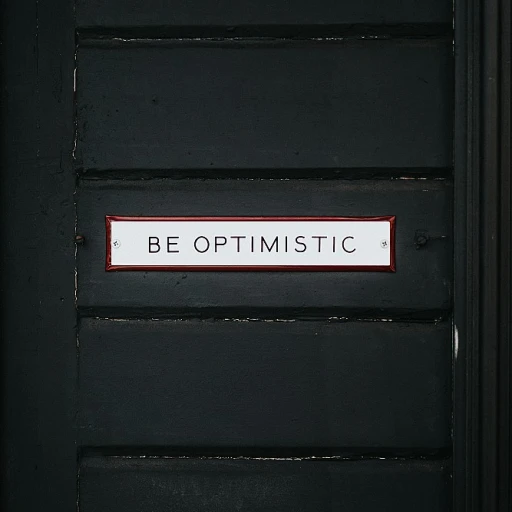
Understanding Capex Procurement
Grasping the Essentials of Capex Procurement
Navigating the terrain of capital expenditure (capex) procurement can be quite intricate, yet understanding its foundation is key to achieving strategic advantages. At its core, capex procurement involves the acquisition of long-term assets necessary for a company's business growth and ongoing operations. This procurement process is pivotal as it often represents a significant portion of a company's capital investments, impacting financial health for years to come. Effective capex procurement management requires the coordination of numerous elements such as supplier selection, cost analysis, and adherence to business strategies. Organizations need to balance between quality and cost — ensuring that the capital expenditures align with broader organizational goals and yield measurable value over time. Capex projects often entail detailed planning, covering everything from identifying the necessary capital resources to negotiating terms and conditions with suppliers. Procurement teams play a crucial role here, not just in securing the best deals, but also in managing these processes efficiently to prevent wastage of time and resources. As businesses face varying market demands and economic climates, the importance of refining the capex procurement strategy cannot be overstated. The efficacy with which a company manages these expenditures can bolster its competitive edge and ensure long-term sustainability. Furthermore, a comprehensive capex sourcing framework empowers businesses to anticipate potential challenges and rapidly adapt to supply chain fluctuations, ensuring a seamless procurement process that supports the overall strategic goals. For those looking to deepen their understanding of efficient procurement strategies that catalyze change within human resources and beyond, consider exploring this insightful case for change in human resources transformation.Aligning Procurement with HR Goals
Strategically Integrating Procurement with HR Aspirations
Aligning procurement processes with human resources goals is a pivotal strategy for organizations aiming to harmonize their operations and achieve seamless business growth. Procurement, particularly in the context of capital expenditure (capex), has far-reaching implications on both the operational and strategic levels of a company. To establish this alignment, procurement teams need to understand and incorporate the overarching objectives of the HR division. This is not merely about addressing immediate purchase needs but about planning in a way that supports long-term value and efficiency.- Synchronization with Business Objectives: Strategic procurement should mirror the organization's broader HR goals. This ensures that capex investments are aligned with the talent acquisition, retention, and development strategies that drive business innovation and sustainability.
- Efficiency Through Cohesion: By uniting procurement with HR objectives, businesses create an environment where project management is both cost-effective and resource-efficient. This synergy reduces redundancy, leading to streamlined operations and optimized capital expenditures.
- Fostering Robust Supplier Relationships: When HR and procurement processes are aligned, companies can negotiate better terms and conditions with suppliers. Strong supplier relationships contribute to more favorable cost savings, supporting business initiatives that rely heavily on capital investments.
- Long-Term Strategic Planning: Organizations should engage in strategic procurement planning that not only meets current project needs but also anticipates future capex projects. This foresight is essential for maintaining competitive advantage and ensuring sustained business growth over time.
Identifying Key Stakeholders
Engaging All Parties in the Capex Procurement Journey
In the multifaceted terrain of capex procurement, identifying and engaging key stakeholders is pivotal to ensuring the seamless flow of the procurement process. It is evident that without a holistic approach, aligning procurement with strategic business objectives may falter. Hence, stakeholders across various levels within the business must be intricately involved. Establishing a thorough understanding of stakeholder roles, expectations, and concerns plays a vital role in crafting effective capital procurement strategies. These stakeholders often encompass:- Executive Leadership: Their vision guides the overall business strategy, integrating capital expenditures into long-term business growth objectives.
- Procurement Teams: Tasked with managing the entire procurement process, these professionals ensure the process aligns with the company's strategic procurement goals and terms conditions.
- Finance Departments: Responsible for overseeing capex investments and cost management, the finance team helps maintain a balance between capital and operational expenditure (capex opex).
- Project Management: These individuals or teams offer critical inputs to the project's needs, maintaining adherence to costs, timelines, and quality without compromising on efficiency.
- Suppliers and Vendors: Building healthy supplier relationships is essential for effective capex sourcing and long-term tie-ups that aim to achieve cost savings and procurement efficiency.
Risk Management in Procurement
Mitigating Risks in Capex Procurement
Managing risks is paramount in the capex procurement arena. This aspect of strategic procurement goes beyond merely securing the best supplier for capital projects. Organizations must identify potential risk factors early in the procurement process to safeguard their investments and ensure long-term success.- Supplier Risks: Evaluating suppliers comprehensively is critical. Businesses should consider factors such as the supplier's financial stability, history with similar projects, and adherence to agreed terms and conditions. Strengthening supplier relationships can mitigate disruptions in the supply chain.
- Project Delays: Delays in capex projects can inflate costs and undermine business growth objectives. Proactive timeline management, including contingency planning, ensures such delays are minimized and efficiency enhanced through the procurement process.
- Cost Overruns: Cost management in capex investments is essential. Strategic procurement teams must regularly review budget forecasts and actual expenditures, allowing for adjustments that align with the company’s financial goals.
- Market Fluctuations: Economic instability and changes in market conditions affect supply chain pricing and availability. Keeping abreast of market trends assists organizations in making informed procurement decisions, ultimately protecting their capital expenditure investments.
Leveraging Technology for Procurement
Embracing Technology for Strategic Sourcing
The procurement landscape is evolving, and technology plays a crucial role in enhancing the efficiency and effectiveness of capex procurement processes. Organizations looking to optimize their capital expenditures must consider integrating the right technological solutions into their strategic procurement practices.- Digital Tools in Procurement: Leveraging digital tools can streamline the procurement process, enabling procurement teams to make informed decisions quickly. Automated platforms can manage supplier relationships, track capital investments, and project costs more efficiently, reducing the likelihood of errors and mismanagement.
- Data-Driven Decision Making: By utilizing data analytics, businesses can gain insights into their procurement strategy. This allows for better forecasting, management of supply chain disruptions, and enhanced negotiations with suppliers. Data-driven insights help organizations focus on long-term goals and ensure cost savings while maintaining supplier relationships.
- Improving Supplier Collaboration: Communication platforms and collaboration tools can significantly improve interactions between procurement teams and suppliers. Enhanced communication leads to a clearer understanding of terms and conditions, fostering long-term partnerships essential for business growth.
- Enhanced Risk Management: Technology aids in identifying potential risks in procurement processes, helping to mitigate negative impacts on capex projects and ensuring capex sourcing aligns with business objectives. Advanced technologies enable ongoing risk assessments, allowing companies to adapt strategies as necessary.
- Simplifying Compliance: Keeping track of compliance with regulations and policies can be challenging. However, technology simplifies this process by ensuring procurement strategy aligns with regulatory standards, essential for maintaining credibility and trust in the business environment.
Measuring Success and Continuous Improvement
Measuring Success in Procurement Initiatives
To ensure that your capital expenditure procurement strategy yields the desired results, it is crucial to measure success regularly. Accurate assessments provide valuable insights into the efficiency and effectiveness of procurement processes, allowing organizations to make informed decisions and improvements over time. Here's how to evaluate the success of your procurement initiatives:
- KPI Tracking: Identify key performance indicators (KPIs) linked to procurement strategies. These may include cost savings, supplier reliability, lead time reductions, and capex project completion times. Regularly tracking these KPIs helps gauge whether procurement meets strategic goals.
- Stakeholder Feedback: Engage with key stakeholders, including procurement teams, finance, and project managers, to collect their feedback. This input can reveal areas of success and opportunities for improvement within the procurement strategy.
- Cost-Benefit Analysis: Conduct thorough cost-benefit analyses post-project completion to understand the real value brought by procurement decisions. This involves comparing actual costs and realized benefits against initial projections.
- Technology Utilization Evaluation: Assess how effectively procurement technology is being leveraged. Technology should streamline processes and enhance supplier relationships, contributing to the overall efficiency of capex management.
- Continuous Improvement: Establish a process for continuous improvement, where insights from previous projects are utilized to refine procurement practices. Such an approach ensures that the organization remains dynamic and responsive to changes in the business environment.
Evaluating the success of procurement strategies not only optimizes current practices but also prepares organizations for future challenges and opportunities. By focusing on these key areas, procurement processes can contribute significantly to business growth and long-term success.












